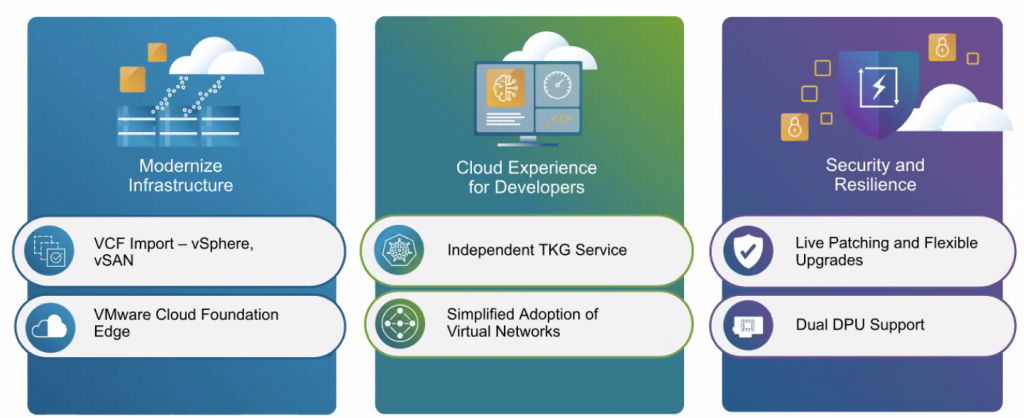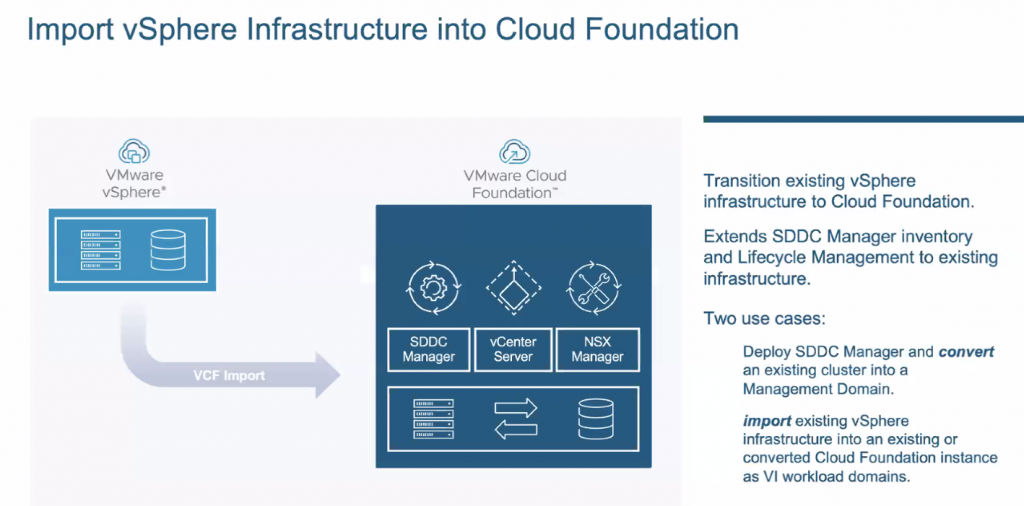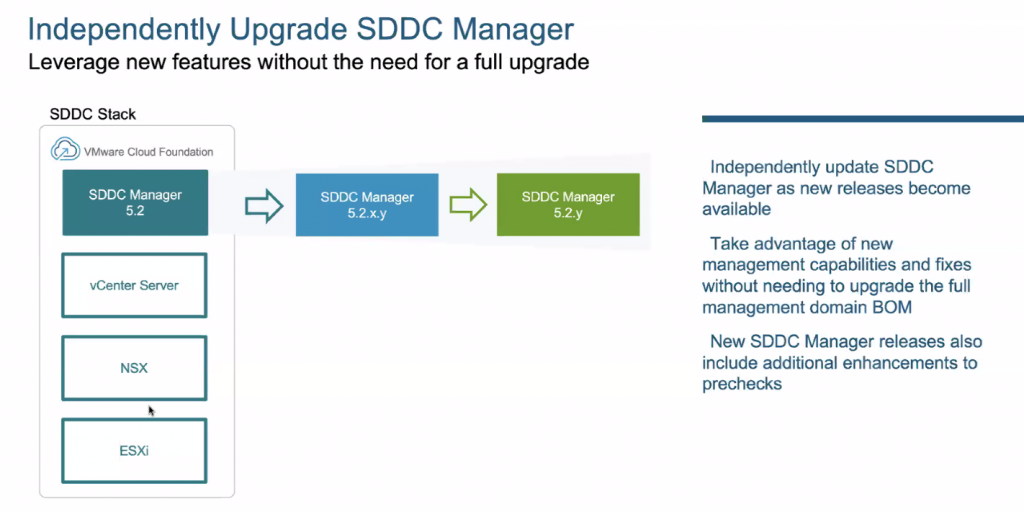VMware Cloud Foundation (VCF) is a way to simplify the path to a modernized private cloud, integrating compute, storage, networking, and management into a unified software-defined data center platform.
VMware by Broadcom has just launched VCF 5.2 on June 25, 2024, and will be Generally Available on
July 22, 2024.
This launch is not just a product update; it’s an evolution designed to address your most pressing needs while aligning with our strategic initiatives: modernizing infrastructure, enhancing cloud experience for developers, and ensuring security and resilience.

For the first time VCF is aligned to the other products releases (for example vSphere 8.0.3 has just been relesead):

VMware Cloud Foundation 5.2 includes the following components:
- SDDC Manager 5.2, Cloud Builder 5.2
- vSphere 8.0 U3, ESXi 8.0 U3, vCenter 8.0 U3, TKG Standard Runtime 8.0 U3
- vSAN 8.0 U3, vSAN Witness 8.0 U3
- NSX 4.2
- VCF Automation and Operations
- HCX 4.9
- Data Services Manager 2.0
What are the may key features of VCF 5.2?

Probably the biggest news is the possibility to implement VCF also in brownfield scenarios by importing an existing vSphere/vSAN cluster into a SDDC manager.
SDDC Manager is the centralized management software in Cloud Foundation used to automate the lifecycle of components, from bring-up, to configuration, to infrastructure provisioning, and upgrades/patches.
In the past a greenfield environment was mandatory to implement VCF and existing workloads have to been migrated in the new VCF infrastructure.
Customers now have two options:
- You can convert a vSphere 8.0u3 environment to a Cloud Foundation management domain.
- You can import a vSphere 7.0u3 (and above) environment to a Cloud Foundation VI domain.
Both approaches allow customers to leverage existing infrastructure and doesn’t require a migration of applications or data.

Note that actually migration from an existing NSX environment is not (yet) supported!
Another important improvement is releated to edge scenarions, that now can cover multiple different cases, including remotely managed standalone edge, air-gapped edge, centrally managed far edge:

For products lifecycle there are several improvements, starting with the new live VCF and ESXi Patching introduced in vSphere 8.0.3 that permit to minimie operational disruptions through live patching. This feature is essential for maintaining continuous operations and safeguarding against vulnerabilities.
But lifecycle management includes lot of other improvemets:
- Independent upgrade of SDDC Manager
- Upgrade or patch domains from SDDC Manager
- Patch individual compoments using SDDC Manager
- VCF upgrade flexibility
- Deploy new async patched domains
- Create an offline depot local patch repository
The independ upgrade of SDDC Manager really improve the flexibility of VCF upgrade without the need to upgrade the full management domain. Also new SDDC Manager release may include additional pre-check for update/upgrade, for this reason make more sense upgrade this component independently.

For more information see:











